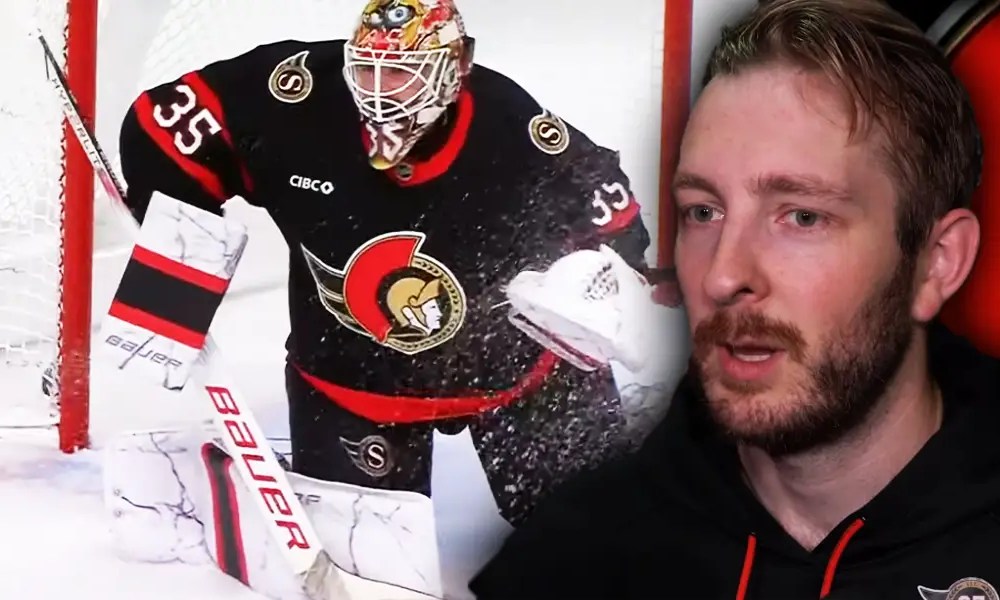[ad_1]
After Thursday night’s win over the New Jersey Devils, with two games in the books, the Toronto Maple Leafs find themselves in a 1-1 split. They sit atop the Atlantic Division—tied with five other teams. Mitch Marner and Auston Matthews have already taken center stage, logging heavy ice time as expected. Meanwhile, the team’s performance offers a glimpse into who’s stepping up and still finding their footing.
The Senators technically hold the first spot with their 1-0 record, but the Maple Leafs share the two-point tie with four other squads. So far, what do the early-season ice time statistics show fans of the Blue & White? Other than Marner, Matthews, and William Nylander, who’s logging heavy minutes.
Top Forwards for Ice Time: Marner, Matthews, and Nylander
The top three forwards in ice time over two regular-season games for the Maple Leafs is no surprise. Mitch Marner 43:58, Auston Matthews 42:16, and William Nylander 34:52. If anyone was wondering if new Head Coach Craig Berube would cut back Marner and Matthews’ ice time, the answer for now at least is no.
Last season, Marner averaged 21:17 per game. After two games this season, he is averaging 21:59, 42 seconds more than last season. Matthews averaged 20:58 in 2023-24 and is at 21:08, ten seconds more. One interesting thing is that even though Nylander was third in ice time for forwards last year and still is this year, he is down considerably from 19:55 last season to 17:27 this season. That is more than two minutes less ice time.
Bottom of the Ice Time Order: McMann, Reaves, and Kampf
At the bottom of the order regarding time on the ice, we have Bobby McMann at 10:19 and Ryan Reaves at 7:36. I know they each played only one game. But if you look at the person with the third least amount of ice time, David Kampf, he has 21:40 over two games, an average of 10:50 per game. So, he still has more than either McMann or Reaves.
We do have to keep in mind that Kampf has 3:58 on the penalty kill, while neither McMann nor Reaves have set foot on the ice with the Maple Leafs shorthanded.
If we look at even-strength ice time, Kampf and Steven Lorentz have fewer minutes, at 8:44 each, than McMann. One last notable thing with these guys is that Lorentz only played 6:31 at even strength in the first game but saw his even-strength ice time jump to 10:58, a whopping 4:47 improvement. Lorentz earned the extra ice time and used it well, as he might have been the most effective Maple Leafs forward in game two.
What Does All This Mean for the Maple Leafs?
Looking at the ice time distribution through the first two games, it’s clear that Berube isn’t drastically changing how the Maple Leafs’ top stars are utilized. Marner and Matthews are seeing even more ice time than last season, indicating that Berube is leaning on his elite talent to set the tone for the team. The two elite players remain the focal points, tasked with carrying the offensive load, and that strategy seems unlikely to change anytime soon.
However, there’s an interesting shift with Nylander. Despite being a top-three forward, his ice time has dropped by over two minutes per game. This could suggest that Berube is experimenting with new line combinations or managing Nylander’s role more carefully.
Conversely, players like Pontus Holmberg and Lorentz are stepping up in critical situations, especially on the penalty kill. Berube’s willingness to trust his depth players in these crucial moments hints at a strategic approach focused on versatility and building a stronger all-around team. As the season progresses, these ice-time trends will be key to understanding Berube’s long-term vision for the Maple Leafs.
Related: The Good, Bad, & Ugly in the Maple Leafs’ 4-2 Win Over Devils

[ad_2]



